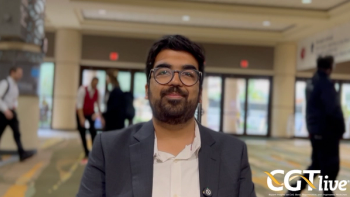
Dr David L. Porter: Combining CAR-T Cells With Other Immunotherapies the Next Logical Step
David L. Porter, MD, of the University of Pennsylvania Health System, explains why treating tumors with a combination of CAR-T cells and other immune-stimulating agents is a logical next step for investigators.
David L. Porter, MD, of the University of Pennsylvania Health System, explains why treating tumors with a combination of CAR-T cells and other immune-stimulating agents is a logical next step for investigators.
Transcript (slightly modified)
Can CAR-T cells be combined with other immunotherapies or targeted agents?
I think there is no doubt that CAR-T cells will ultimately be combined with other immunotherapies and other agents. There are years and years of precedent for combining different types of anti-cancer therapy. I do think there will be some cases where CAR-T cells are sufficient by themselves. We’ve seen that already in some of these B-cell malignancies and ALL [acute lymphoblastic leukemia] and some people with non-Hodgkin’s lymphoma or CLL [chronic lymphocytic leukemia].
But there will be situations where the CAR-T cells may not be effective by themselves, and there are some natural combinations one can start thinking of. For this to be effective, the T-cell has to be active, so combining the CAR-T cells with immune stimulating agents will be very, very logical: some of the checkpoint inhibitors, for instance.
There are clinical trials also now ongoing, combining CAR-T cells with medications like ibrutinib. Ibrutinib’s a very common therapy for CLL and some B-cell malignancies, and there is good laboratory data now that ibrutinib may make the CAR-T cells more effective at killing their target, at killing CLL cells for instance. And there’s data in the laboratory that it may make the CLL cells better targets for the T-cells to kill them. And so it’s another natural combination that I think investigators are thinking of testing.
And there are a number of other agents that one can think of to try and activate the T-cells when perhaps the body’s natural defenses are designed to keep the T-cells from becoming activated, or the cancer’s defenses are designed to keep the T-cells from getting into the tumor or from being activated. So I think there are a lot of possibilities, and we will see these trials being done over the next few years, combining CAR-T cells with other agents as well.
Newsletter
Stay at the forefront of cutting-edge science with CGT—your direct line to expert insights, breakthrough data, and real-time coverage of the latest advancements in cell and gene therapy.

















































